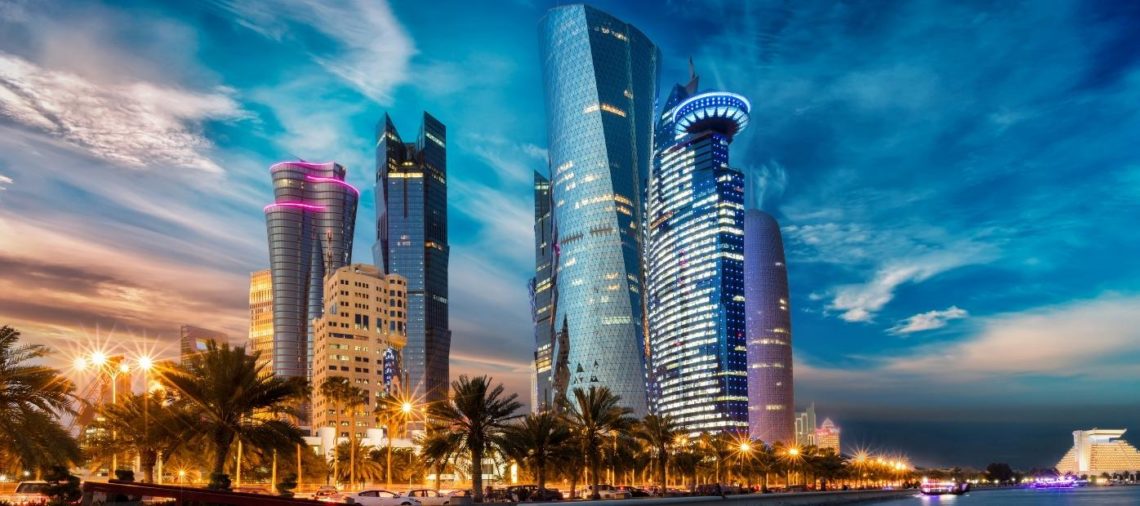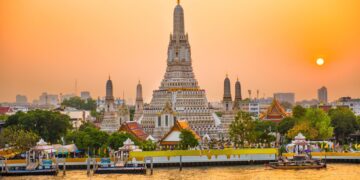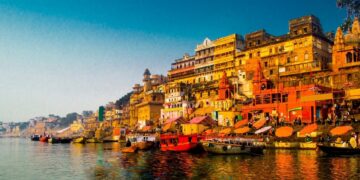I had a balanced program in the three days of state in Qatar, especially in the capital of Doha, which is, after all, the tourist center of the country. Depending on how you get here, it’s good to organize your time on the idea that life in Qatar has a slightly slower pace. But the services are always impeccable, and the locals have never let the feeling that things are at the will of chance. You can hire a car if you want to — fuel costs are embarrassingly low but don’t think about traffic being so easy. In addition, locals are driving quite strangely, and light accidents are pretty frequent. Watch the speed restrictions because there are radars everywhere, and the fines are criminal. You’d better go to tourist services, local agents and guides, who always know how things work. So… let’s find seven things to see and do in Qatar, from my own experiences:
1 Go to the camel races
I was not lucky to catch a camel race because their season starts in November-December. Still, we arrived at Al Shahaniya, the great racecourse (about an hour from Doha) where the races are held and where the camels are trained by (primarily) Sudanese caregivers in the offseason. The camel racing thing in Qatar is fascinating. This is called “sport of sheiks” and awakens unsuspected passions, although, attention!, in Qatar bets are forbidden. So, at first glance, the races take place by the love of art. But it’s not like that at all.
Camel racing has been taking place in Qatar since 1972, immediately after the country’s independence, as a sport inherited from ancient times, which attracts many young people from the Gulf and is particularly expensive. That’s because a racing camel can reach the price of $200,000, plus caring and training. Each season there are several races, and the prizes are outrageous, ranging from the latest models of Lamborghini to the top prize – the Golden Sword, which is awarded in the Emirate race at the end of the season.
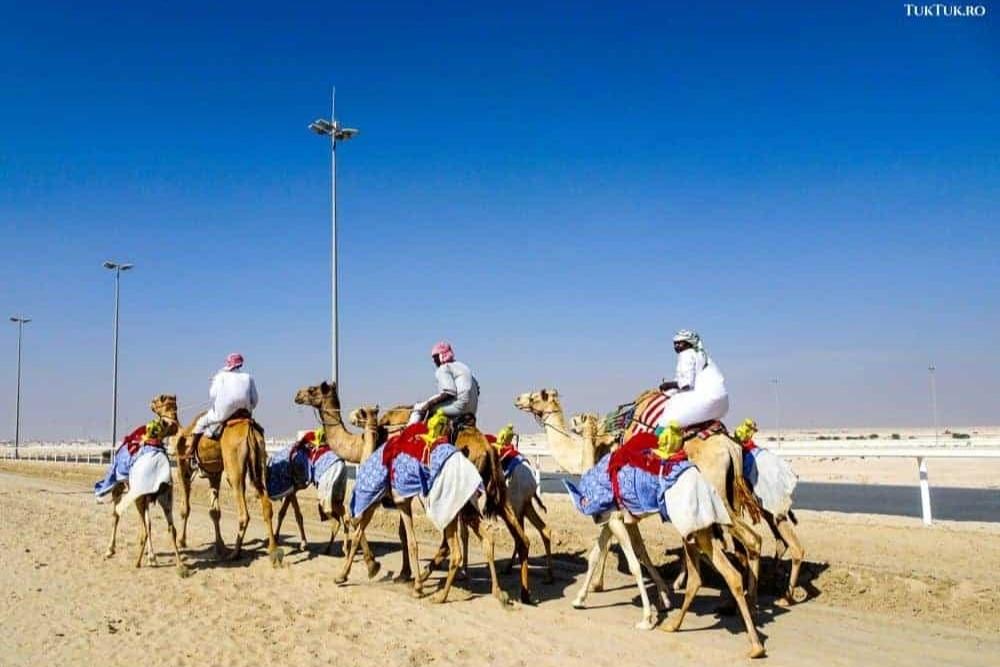
As I was saying, camel owners need to afford the cost of buying the animal and the cost of caring for the animal, which is increasing every year. To this is added the price of inseminating certain breeds of camels, an absurd one. But the most interesting thing comes from how camels are driven in the race.
Until 2004, camels were led as jockeys by young people and even children aged four. But in the wake of an accident that claimed the death of a child, the government passed a law banning children from racing. That’s how the robot jockeys came along. I saw them in a shop near the racecourse: they are small objects, weighing about 25 kilograms, which have a device that includes a tie that can be handled by remote control by the owner (or coach) of the camel, at the stands. It can whip the camel faster or slower or stimulate it verbally because jockeys-robots have a built-in speaker. A robot like this costs about 5,500 dollars, and a camel can go up to sprints at about 60 km/h, and their steady speed is about 45 km/h.

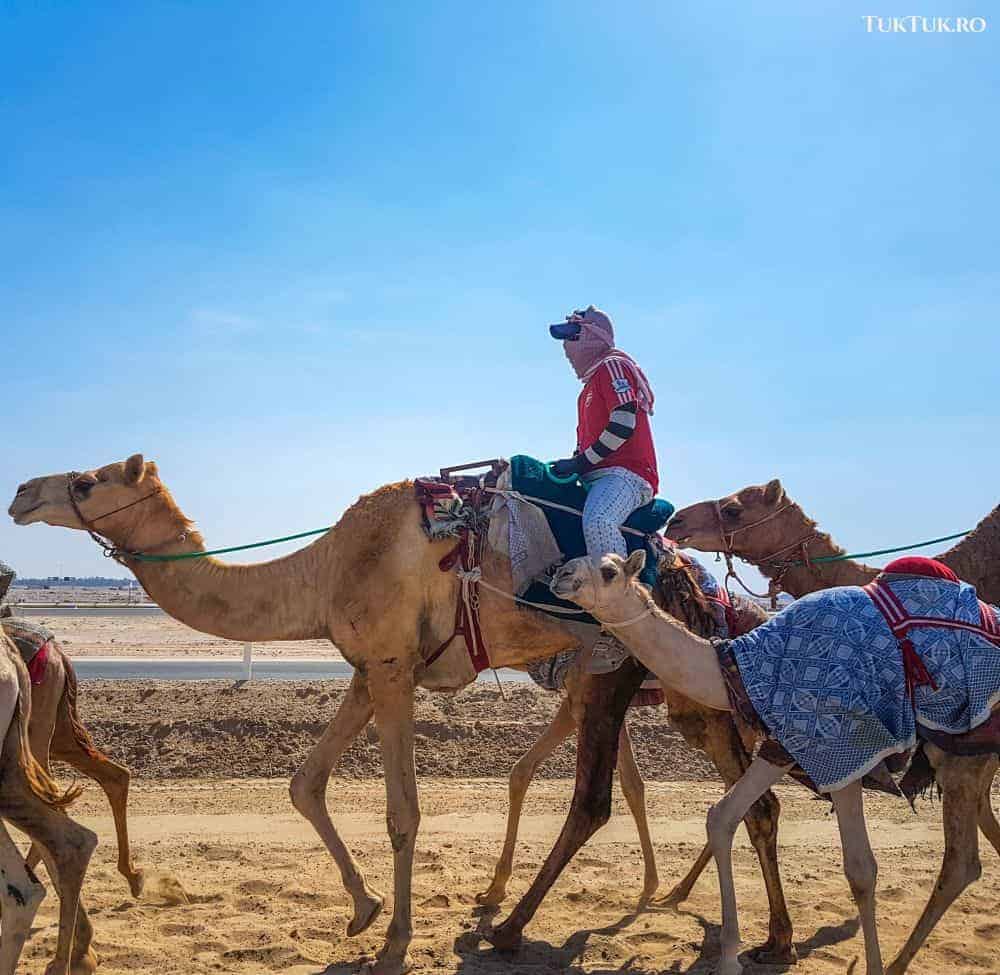
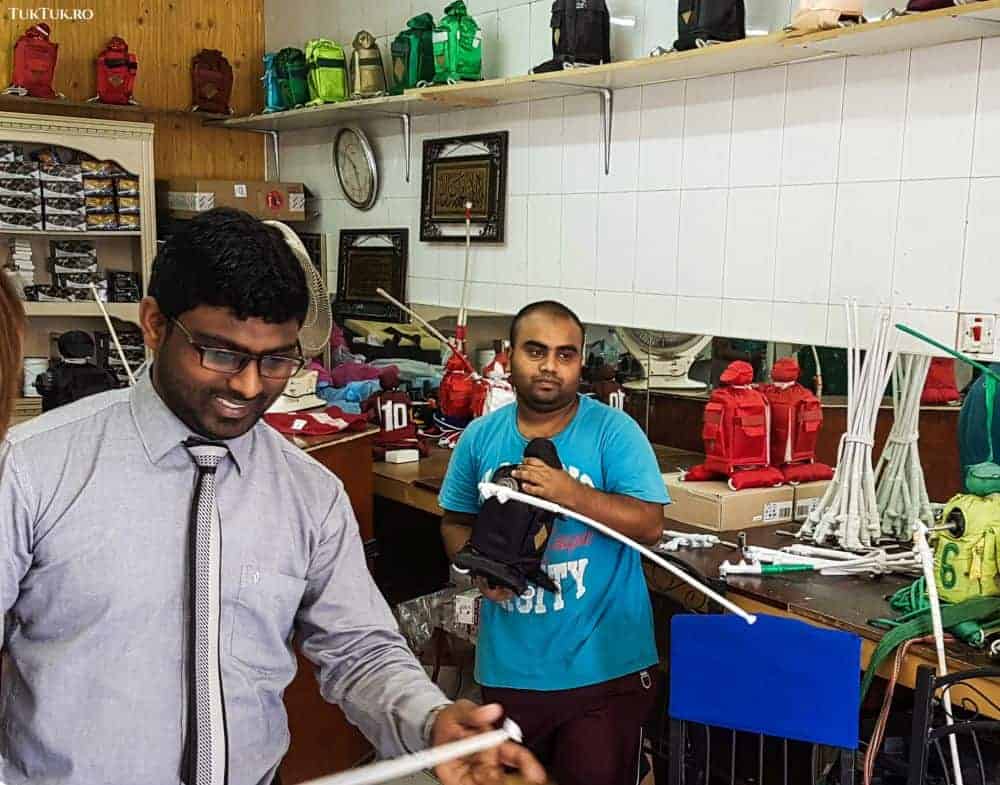
In races on the Al-Shahaniya racecourse, more than 6000 camels participate every season. Most of them are trained at the racecourse by African caregivers, who I’ve seen doing their job diligently, running the camels or giving directions to robot jockeys mounted on their humps. The tracks are long. They reach up to 6 km, so the images of camels training in the middle of… nothing is memorable. It is worth mentioning that the training sessions are completed with relaxation time for the camels, which are allowed to bathe in specially arranged pools with jacuzzi.
And speaking of sports, the Qatari are big fans of movement and sporting events. Football comes first, and the fact that in 2022 the World Cup is to be held in Qatar says a lot about how much is invested in this area. Qatari National Football League has been in existence since 1963. 14 teams are participating in the championship. In addition, handball (known as the national “mercenaries” team, created by Qataris, who became a world vice-champion), golf, basketball, water sports, and motorsports (Doha hosts a Moto GP stage) are also at the top.
2 Relax in Souk Waqif, the Doha bazaar
Souk Waqif is probably the most beautiful place in the capital of Doha and one of the most visited in Qatar. A kind of “old center” of bazaar type, not like any bazaar in an Islamic city but an orderly and clean, with areas for all tastes, from the spice to the one where birds and small animals are sold, from the one dedicated to hunting falcons to the “cultural,” from the one with carpets and fabrics to the one with pots and ceramics, perfumes and jewelry, clothes, souvenirs, everything culminating, of course, with the area of restaurants.
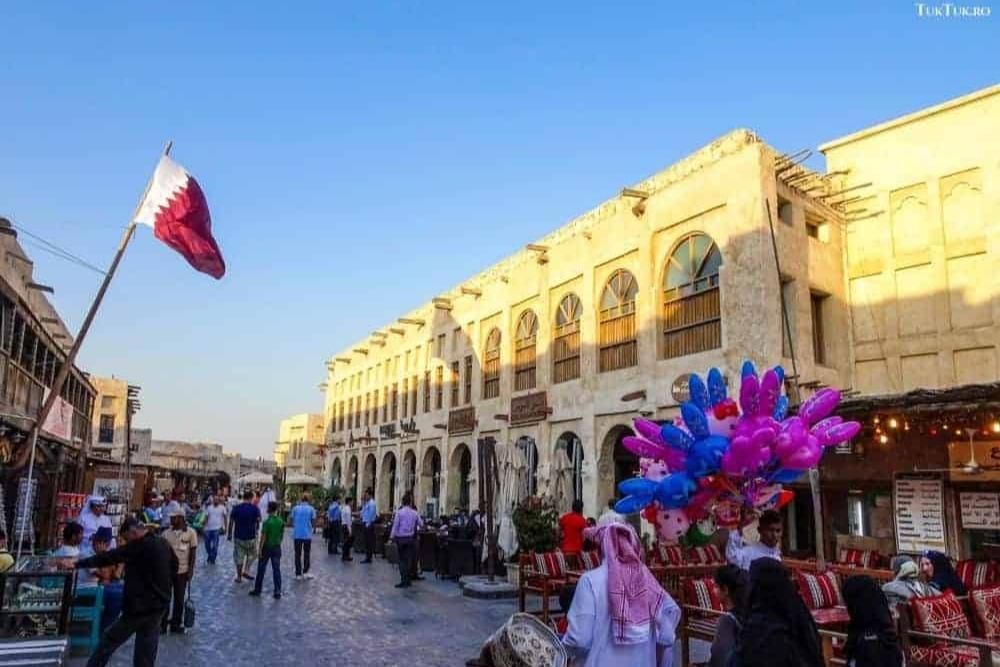
Souq Waqif was founded more than a century ago when Doha was just a village near a dry river, where the Bedouins gathered to trade with their goods (fish, goats, wool). In 2006, the place entered the governmental reorganization plan, the buildings newer than 1950 being demolished and the ones seriously affected by the passage of time being restored. The metal roofs were replaced with the traditional wooden and bamboo tops, and the old ventilation systems and the keeping of a cool climate in the housing were reintroduced. In 2008, the bazaar reopened, offering the image of a splendid place, with a unique atmosphere maintained by numerous cultural events. I attended one – a piece of Islamic music and dance show provided by a few dozen men who were producing at the evening hours in admiration of the ad hoc audience.
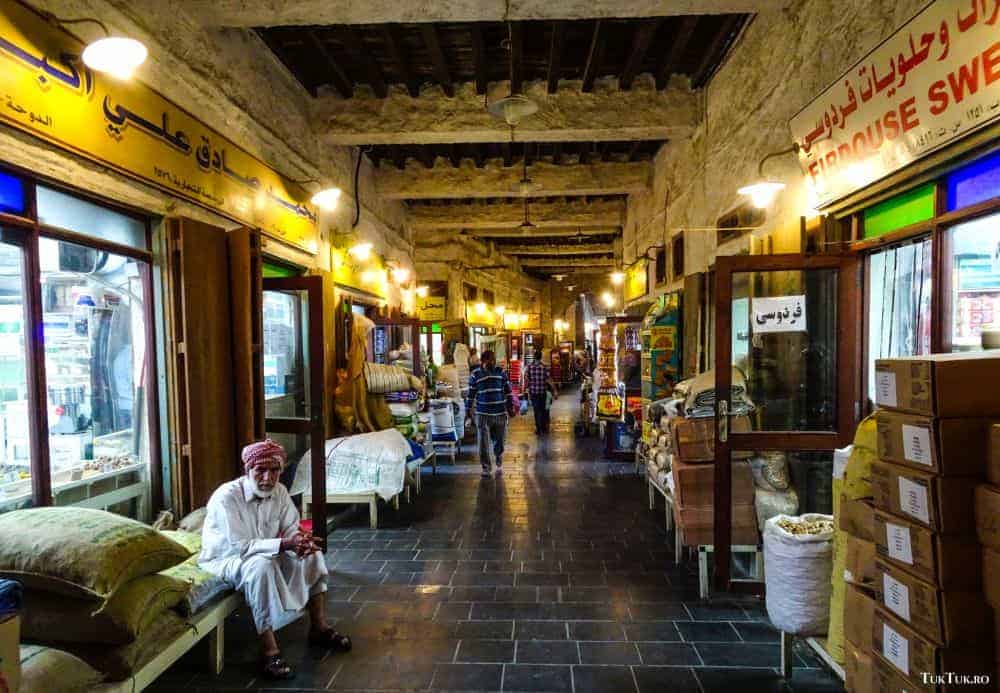
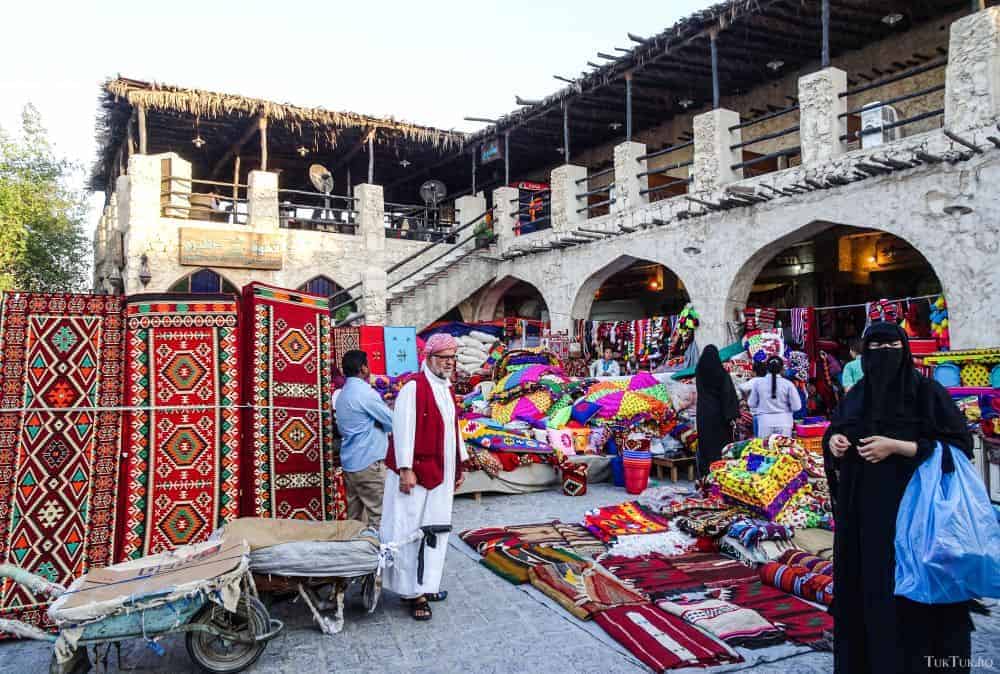
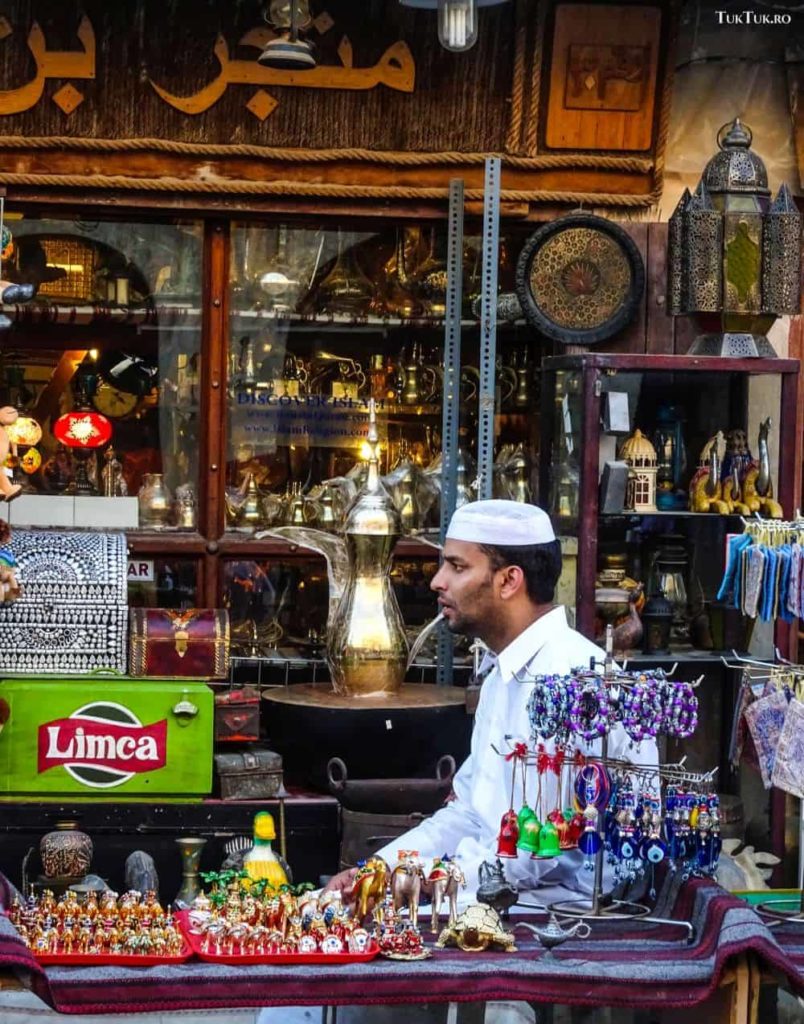
The hunting falcons are spectacular. The falcon is Qatar’s “official” bird, the most valued. It’s a bit shocking to get into the souq right through the falcons. Dozens of birds, beautifully lined up on wooden stands, with heads covered in leather bonnets or ornate materials with traditional motifs. A hawk prepared to participate in hunting parties or dedicated competitions can reach several thousand Qatari rials. In the immediate vicinity is the Falimi Hospital, which looks like a medical center in the middle of a big city. If being a camel racing in Qatar is a noble thing, you would say that being a hawk is sublime. Especially when the master equals you with GPS. Only don’t have to wait too long in the store with your eyes covered.
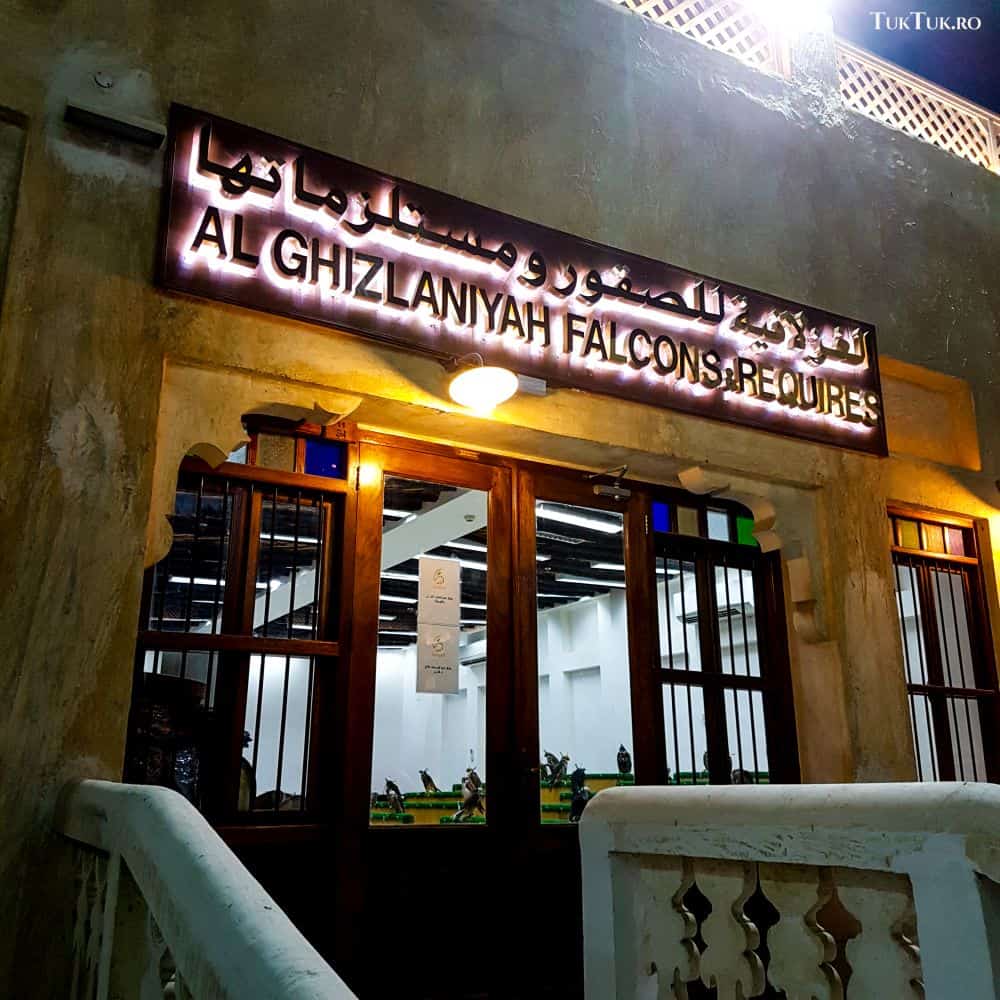
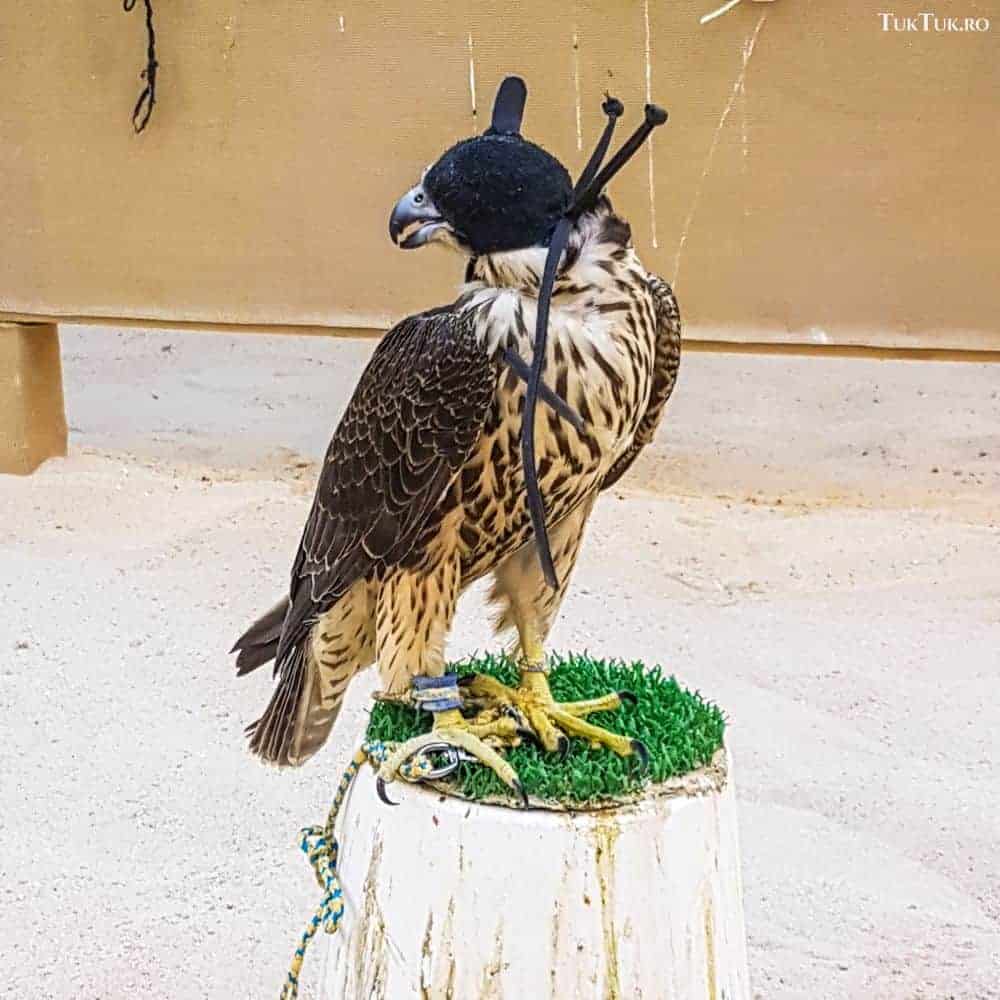
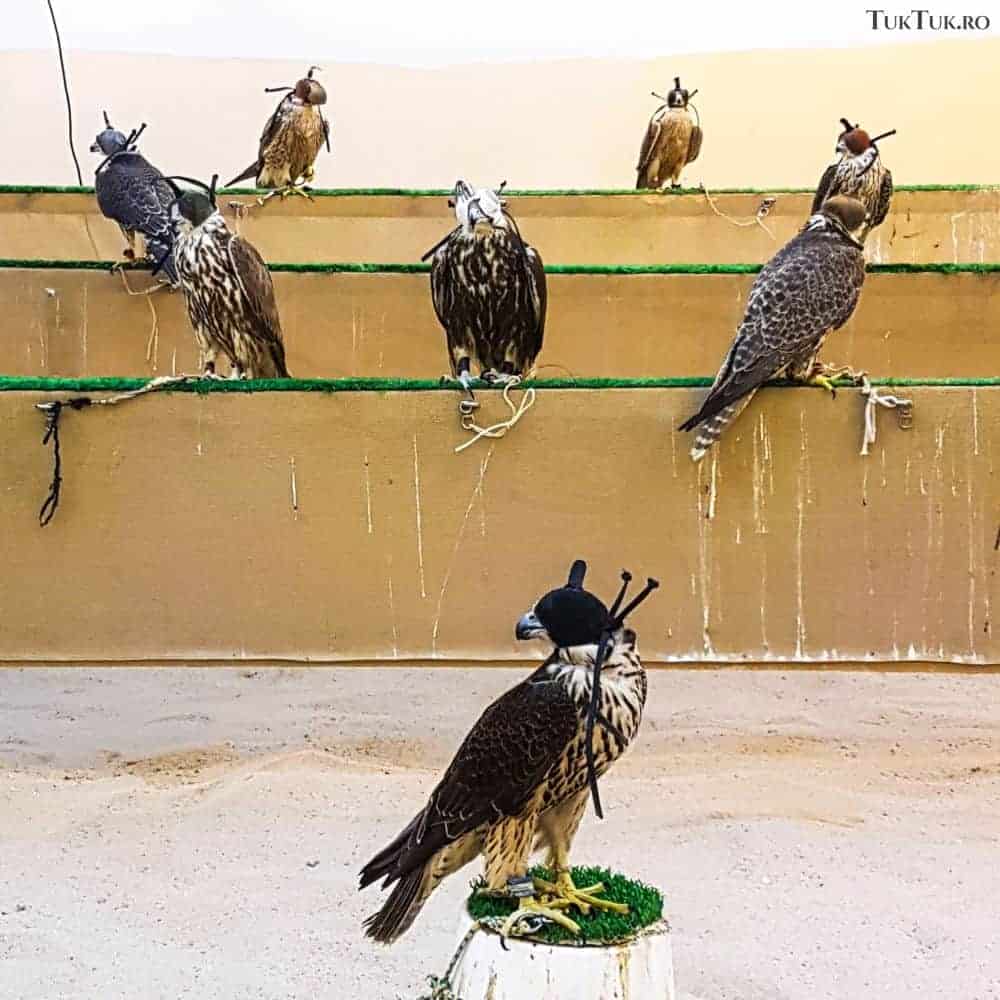
I had lunch in one of the restaurants in the souk. Delicious Arabian food: a menu of lentil soup, with specific appetizers, from humus to moutabal and tabulas, with a mix of various grills and a dessert to match. Qatari food is influenced by Iranian and Indian food, and any meal ends with a digestive, a Karak tea, enriched with milk and cardamons. I didn’t try the camel dishes, probably out of respect for the fact that maybe the guy wasn’t lucky enough to get to the races, and he ended up in the pot.
In all the cases, to sit on a weekend evening (in Qatar the weekend days are Friday and Saturday) at a table in the souk, puffing from an aromatic shisha, with a mint lemonade next yo you, looking at the people who are passing by, is a quiet and relaxing experience of what Doha means. In other words – extrapolating what beautiful life implies in one of the beautiful places of the World. Read more about how to spend one day in Doha.
3 Take a walk on the Cornice of Doha and admire one of the most beautiful skylines in the World
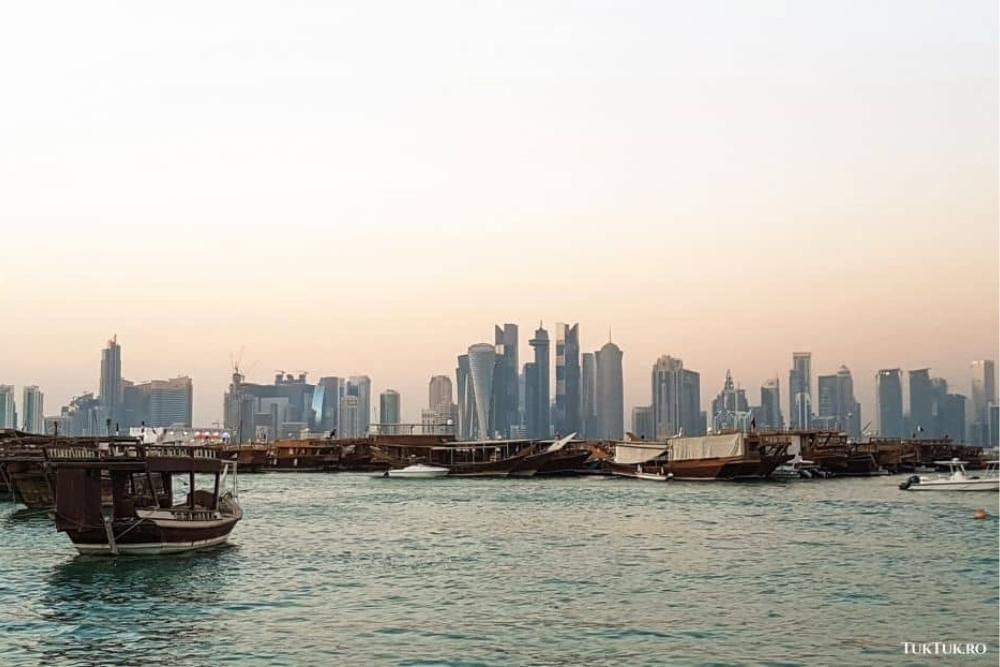
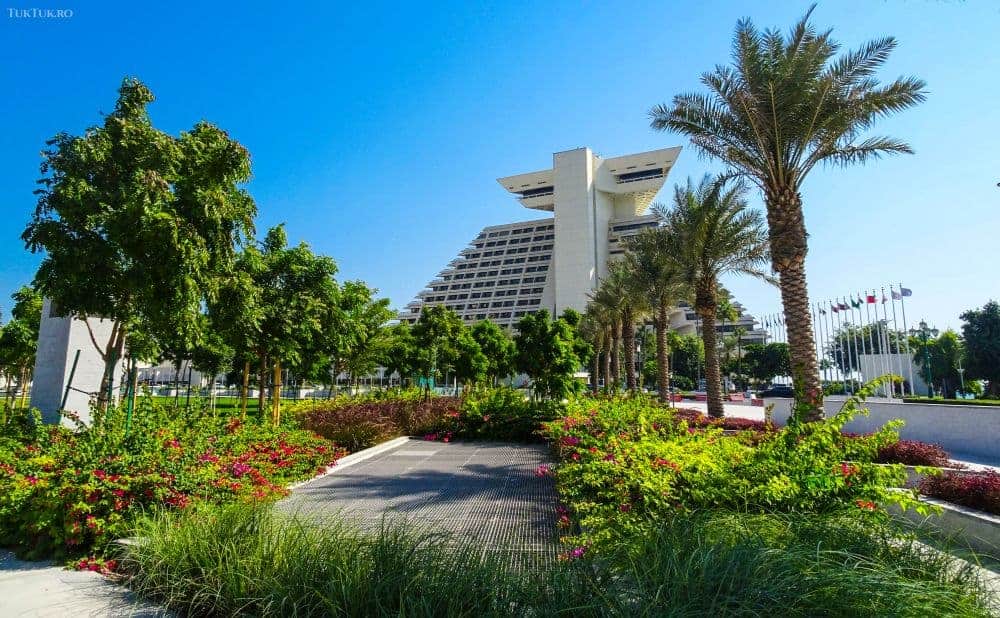
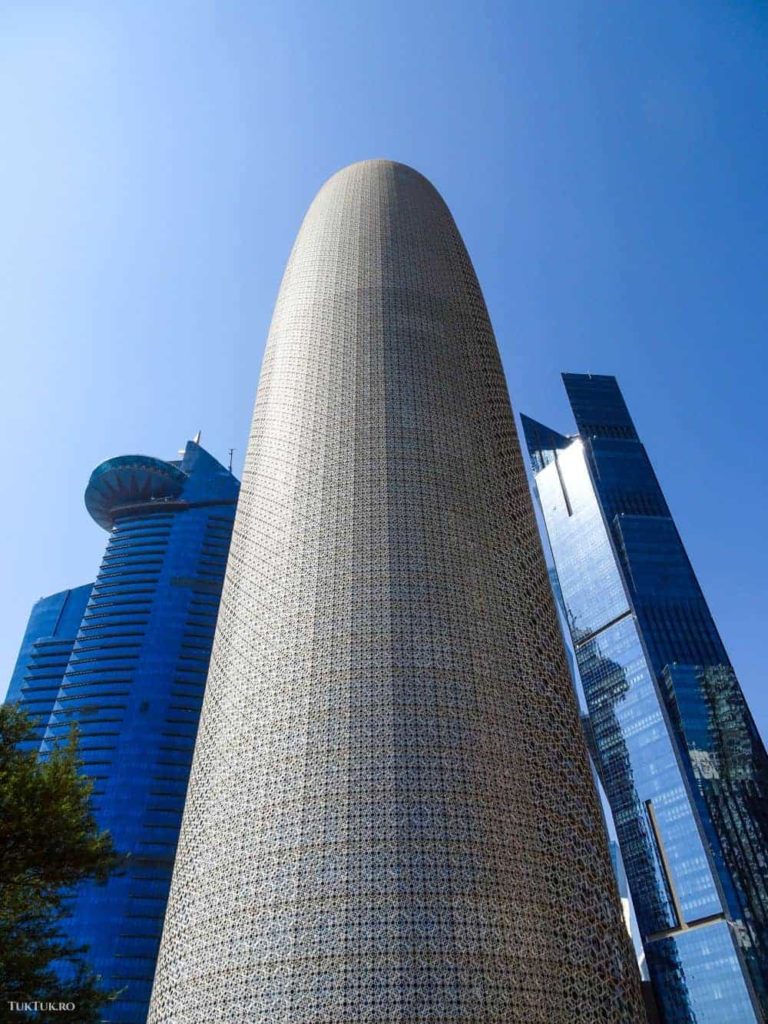
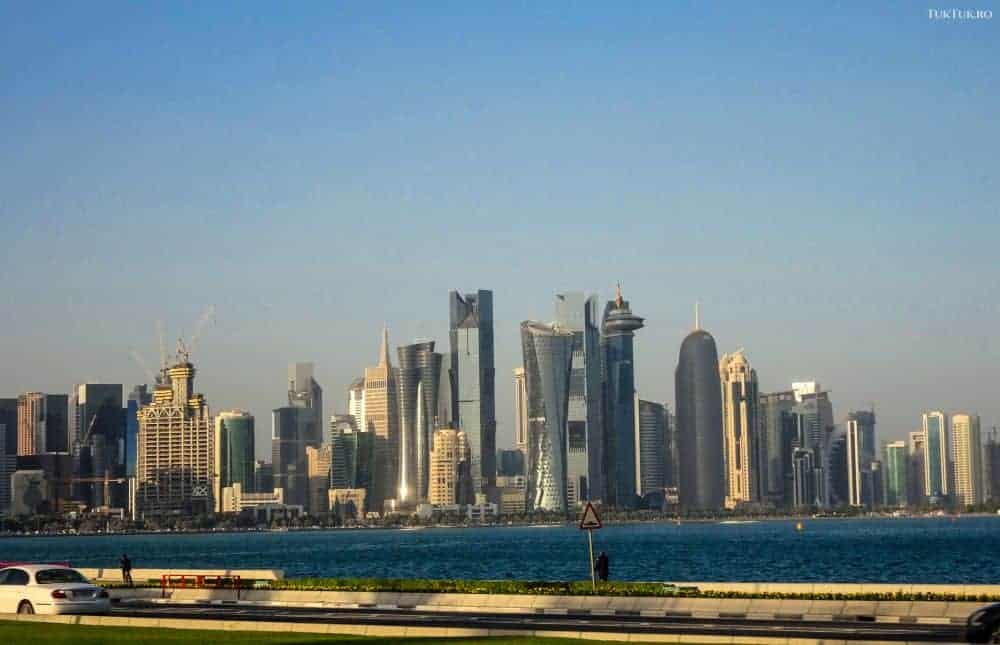
Corniche (Corniche) is a seven-kilometer-long promenade stretching across the Doha Gulf, between the downtown and the area near Souk Waqif, offering a sensational view over the skyscrapers of Qatar, one of the most beautiful skylines you can see on Earth. It is a cliff that is a pleasure to walk on, especially in the coolness of evening clocks, trying to catch a photo as good as possible with the high buildings and their attractive lights.
People go out for walks, running, fishing, and relaxing on the Corniche. From the spectacular Museum of Islamic Art, made by the famous architect I.M.Pei, to the Sheraton Hotel there is about 5 km that you can walk in an hour and a half (preferably not when the sun burns the hottest – I made a part in these conditions and it’s not quite fantastic).
Stunning is the northern area of the Cornice, at the entrance to the traditional port of ships dhow, where there is a beautiful pearl-shaped monument that changes colors at night, inviting visitors to photograph it. From here, you can rent boats to take rides in the bay. In contrast, on the opposite side, near the Sheraton, the pyramid-shaped Aztec hotel, you can relax in Rumaila Park, where families go out on weekends to spend time at the picnic, with the sea of an unreal blue on one side and skyscrapers asleep in the other.
On such a Friday, I took a walk, including nearby huge buildings made of glass and steel, in an unsuccessful attempt to reach one top floor to catch Doha from the height. I did not succeed (only at Sheraton I was lucky, but the hotel is not so high) still I had the feeling of a dwarf in the Gullivers’ country, walking near giants with futuristic profiles and names more than commercial: Palm Tower (245m), Burj Qatar (232m), Tornado Tower (200m) and so on.
4 Get some culture at Katara Cultural Village in Doha
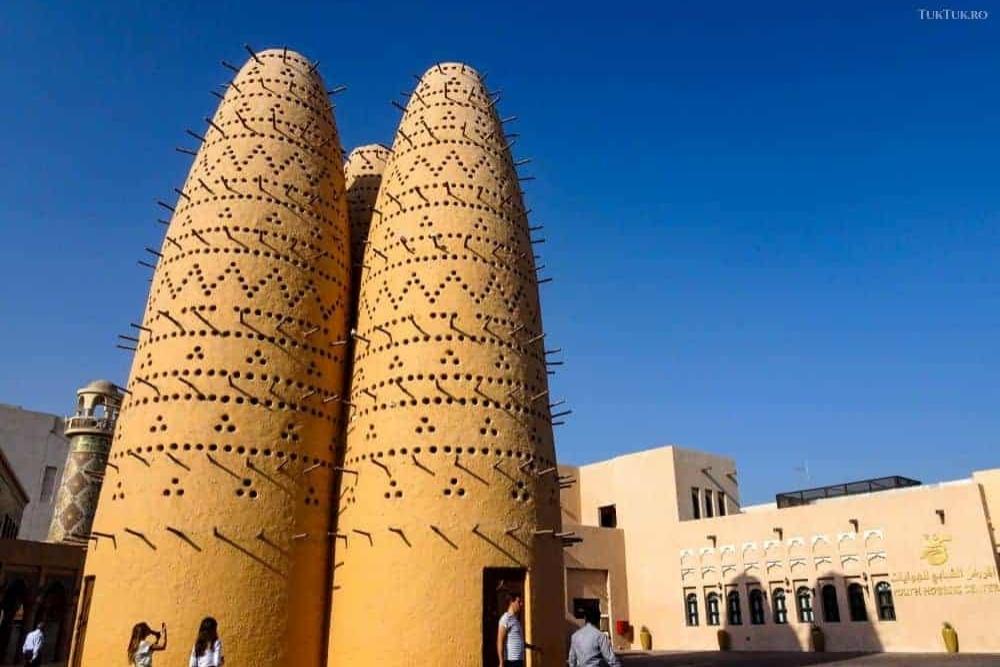
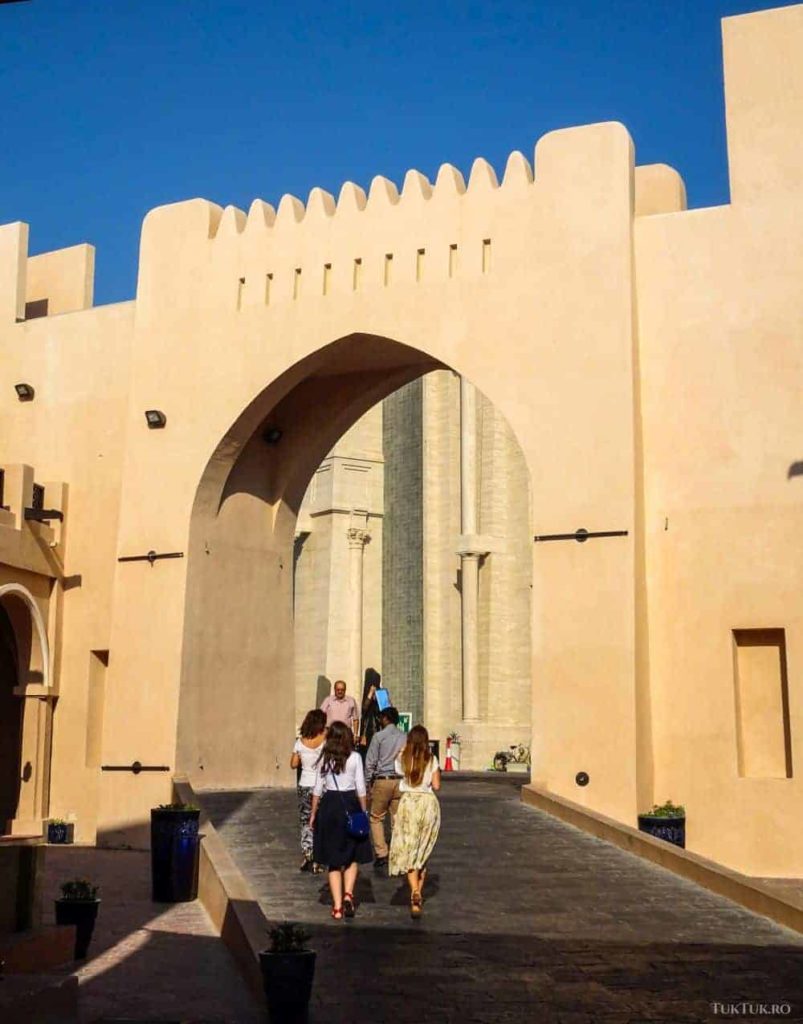
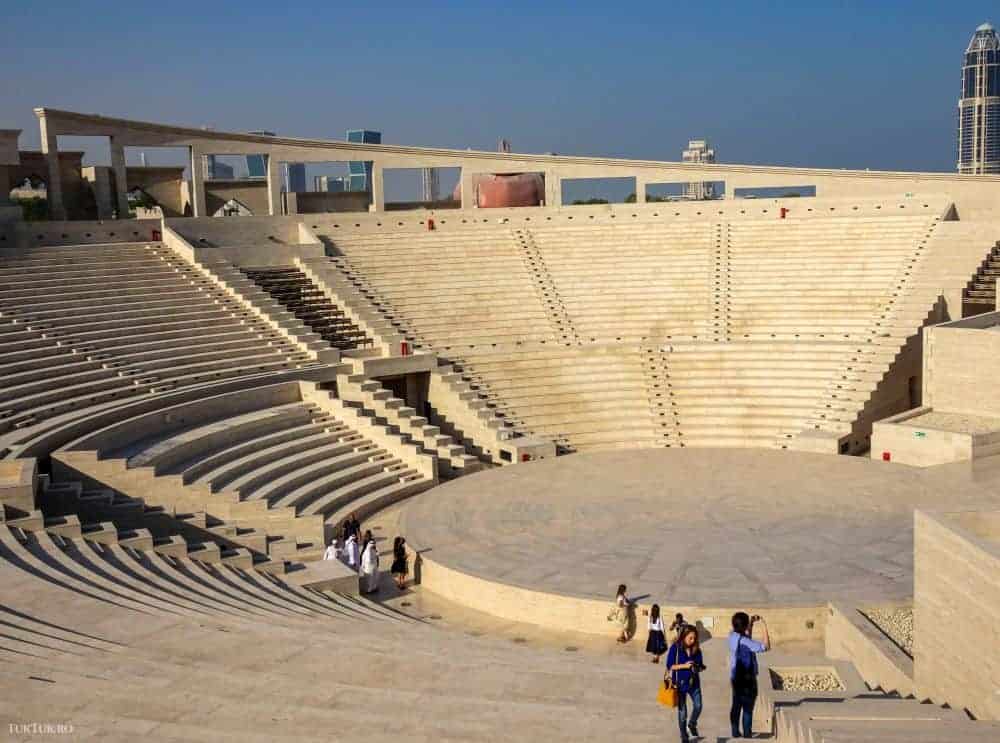
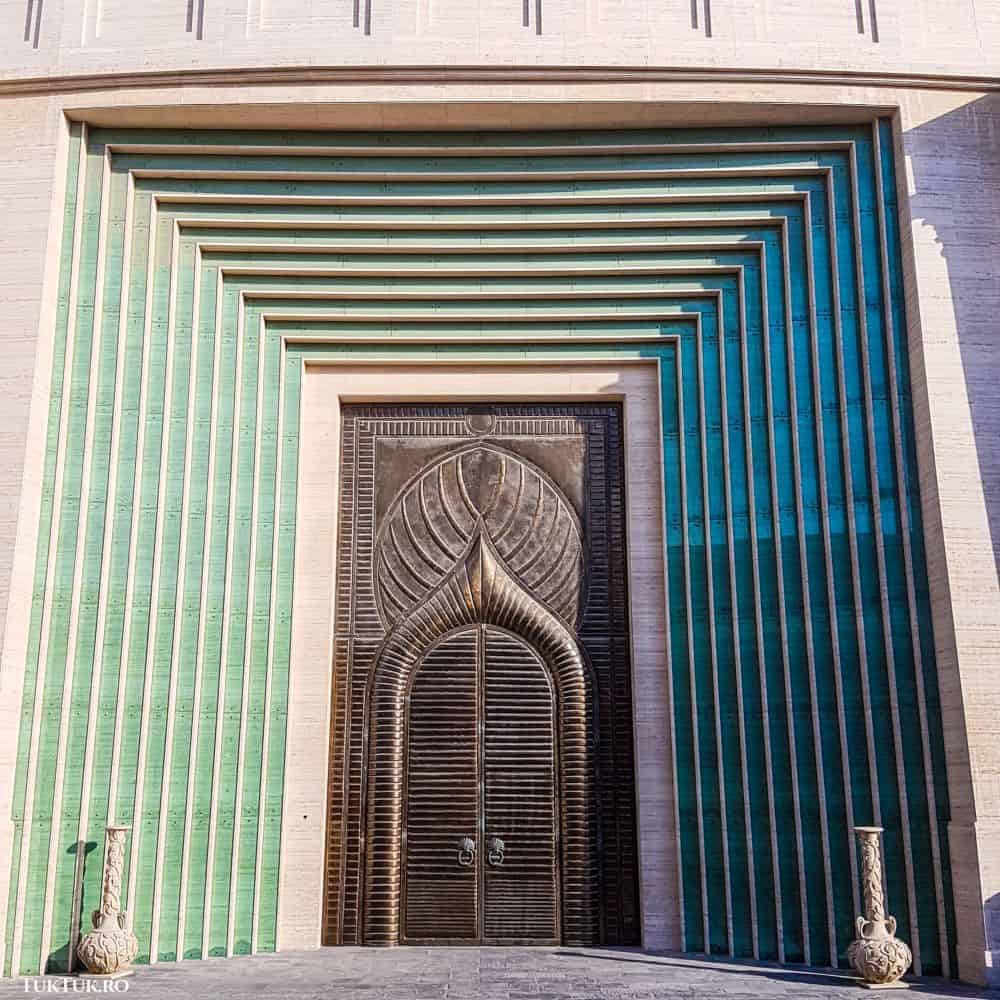
“Valley of Cultures” is also called this exciting place in Doha, which anyone can visit to get acquainted with Qatari traditions, theater, art, and architecture. Katara is close to Pearl Qatar. Even if it is not a spectacular place regarding the proportions, it is worth visiting for the atmosphere and, if you enter a cultural mood, for the offer in this area. This includes libraries, heritage centers, an opera, a theater, art galleries, academic facilities, an interesting Roman amphitheater (which can accommodate 5000 people), cafes, green areas, and a tourist information center. Two festivals are held annually near Al Yazwa public beach (one in winter, the other in summer).
Impressive is the architecture of the place, starting with the two “dove towers” at the entrance, continuing with the alleys and corridors of the complex, with the Katara mosque and the golden mosque. If you have time, it’s worth spending a day at Katara Village and discovering another side of Qatar, a modern, fresh, intellectual one.
5 Feel like a millionaire at Pearl Qatar
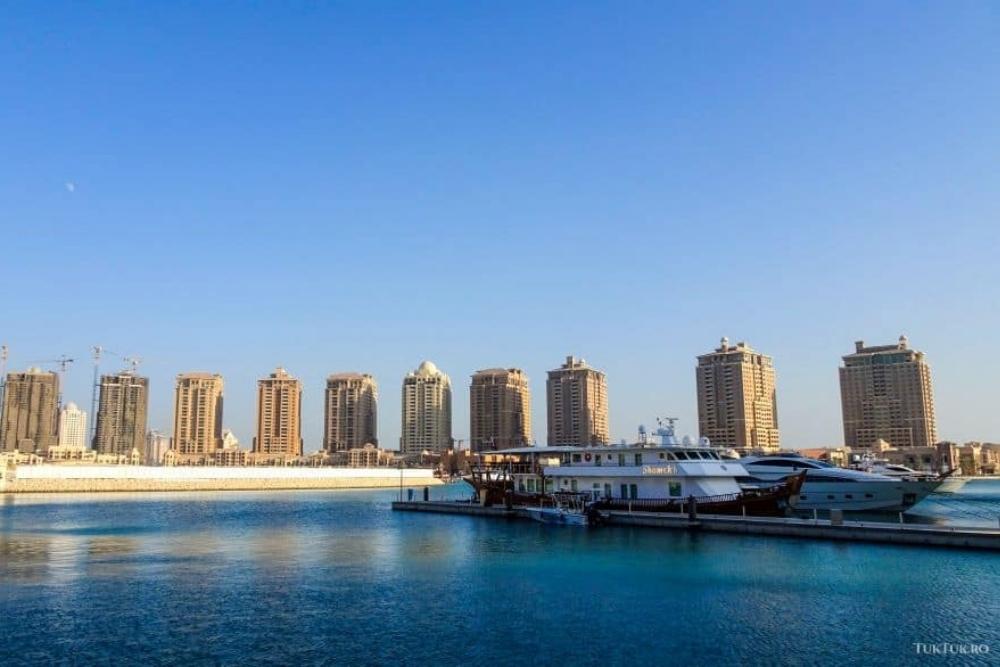
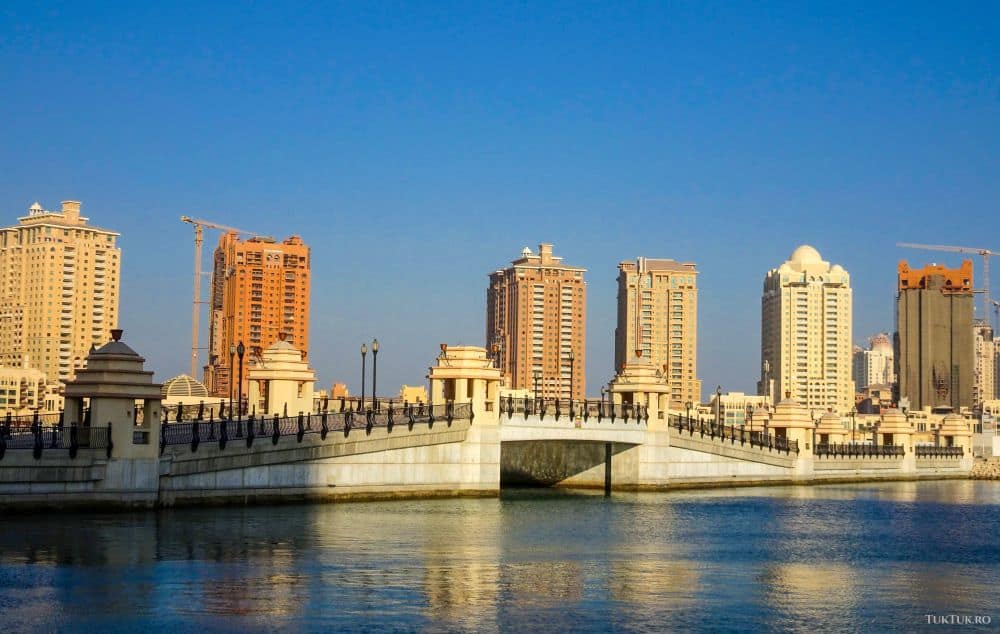
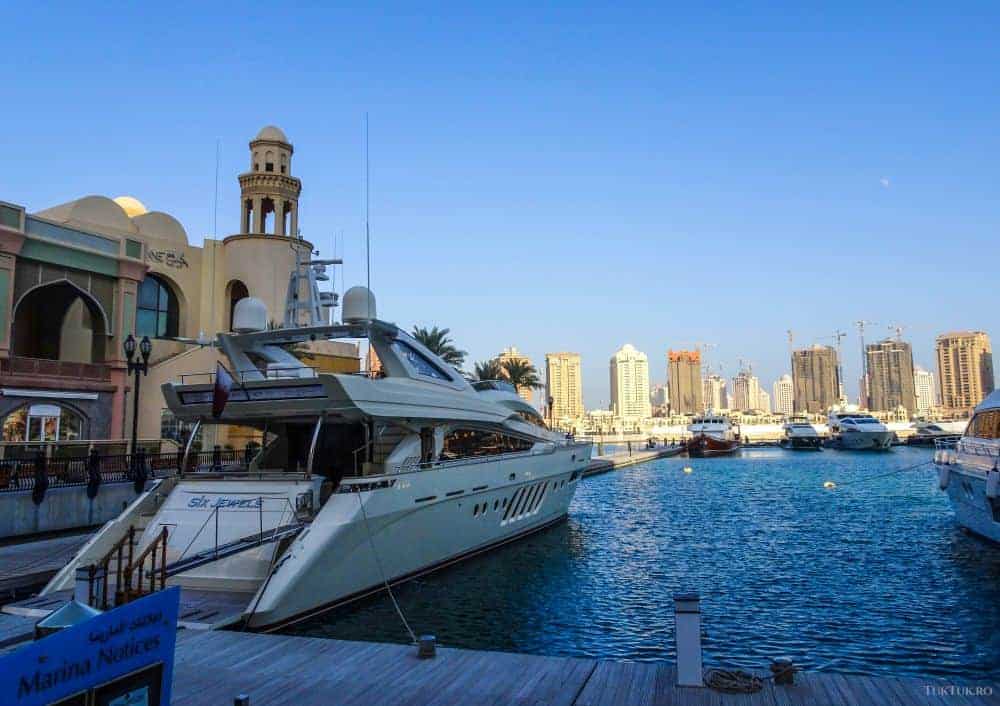
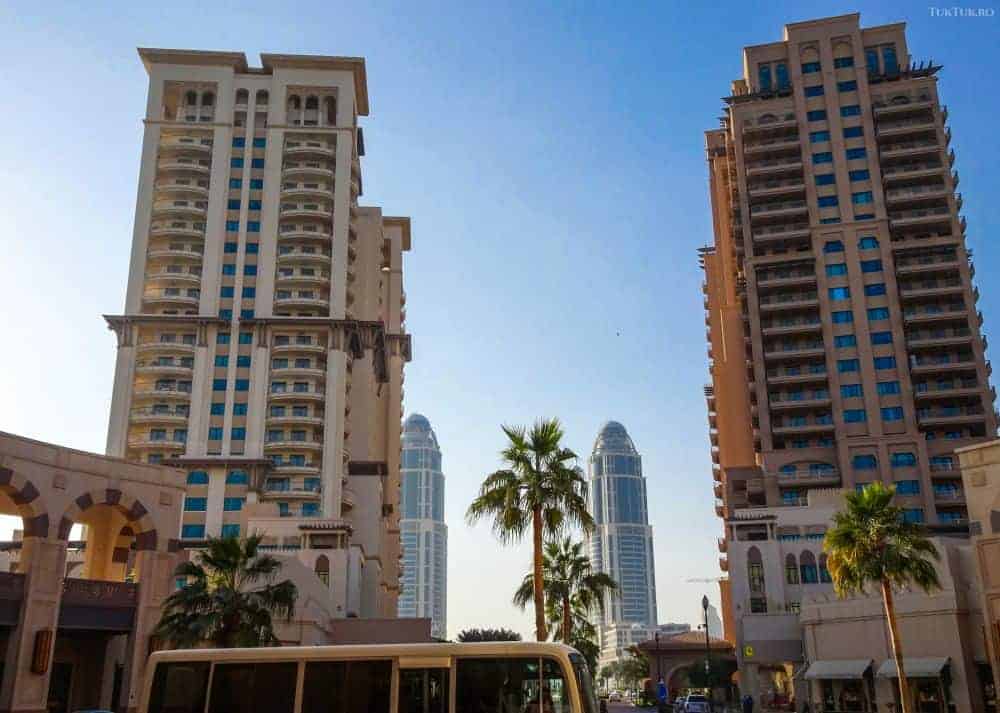
Just as the neighbors in Dubai have their places of reference, the Qatari built Pearl Qatar because of the basic idea that it should be one of the country’s iconic images. After all, we are talking about a housing complex, a residential ensemble. But what a gorgeous one!
Once you pass the two giant towers at the entrance to the pearl-shaped artificial island, which houses another island in the middle, you get a striking Monte Carlo sensation. Tall blocks of flats, millions of dollars’ yachts, luxury shops (a Ferrari winked me out of a window), cafes and restaurants where you expect the menus to start with caviar, and so on. Pearl Qatar is the first and only place in the country where foreigners can buy a property. It is estimated the island population will soon reach about 45,000. The final investment will be 15 billion dollars, although the initial estimates (2.5 billion) have been much exceeded. It will be an ensemble of 13 islands, on the largest of which are placed a lot of luxury villas, apartments, three five-star hotels, restaurants, cafes, and entertainment facilities. Eight of the 13 islands will be privately owned.
6 Visit a fascinating museum in the seclusion: Sheik Faisal Museum
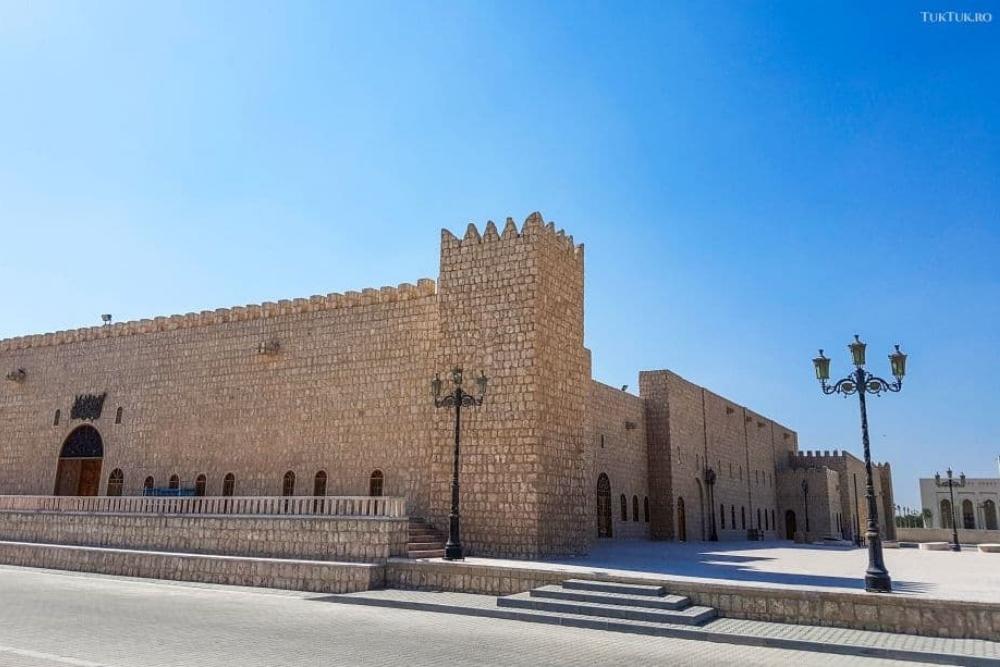
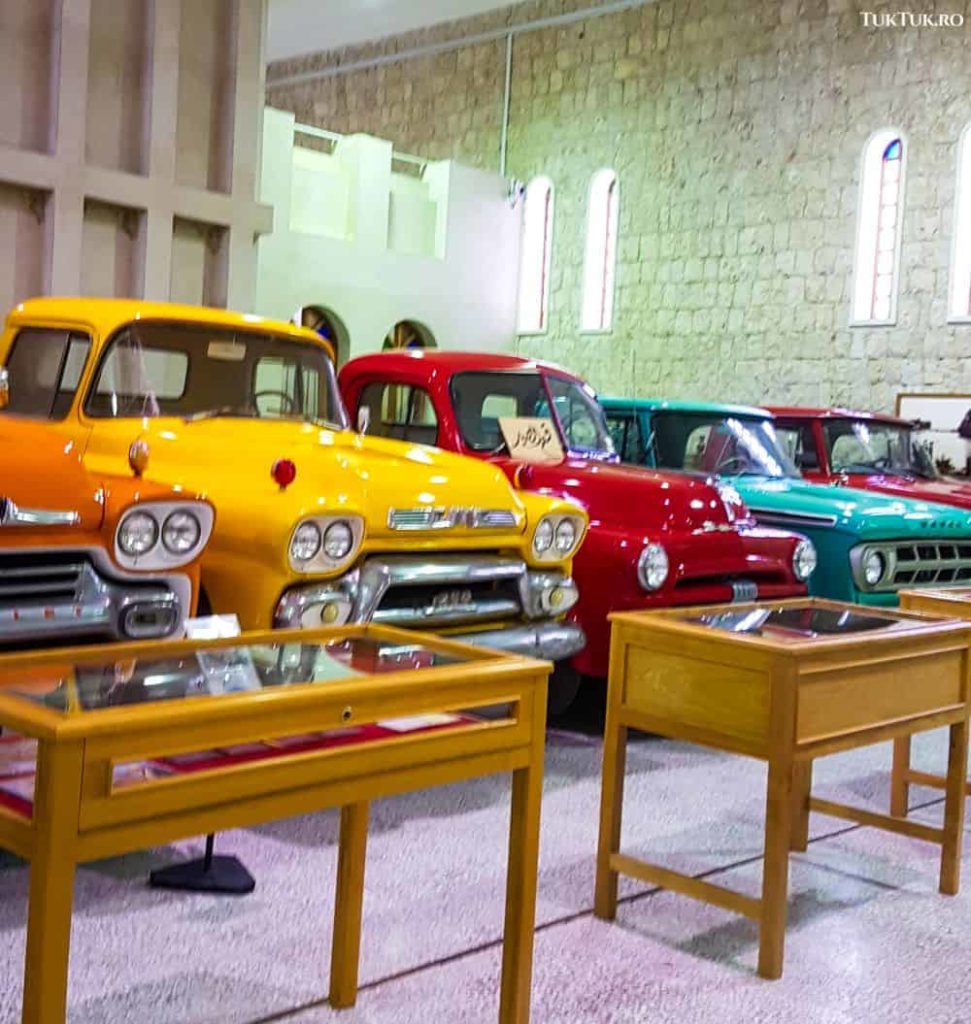
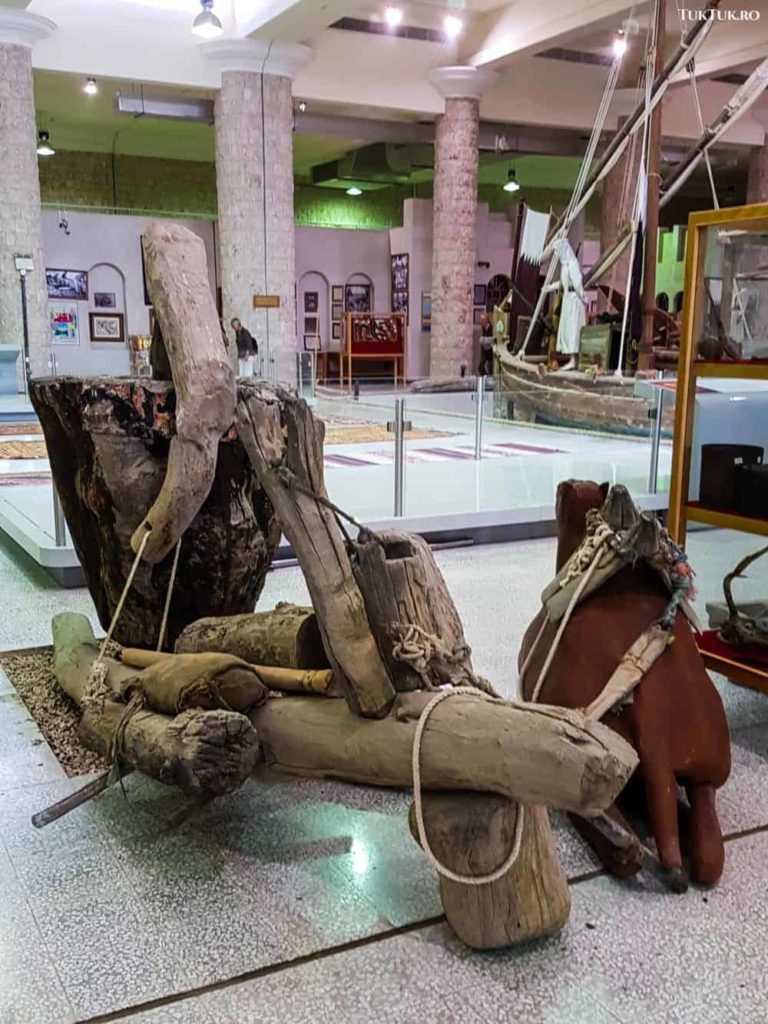
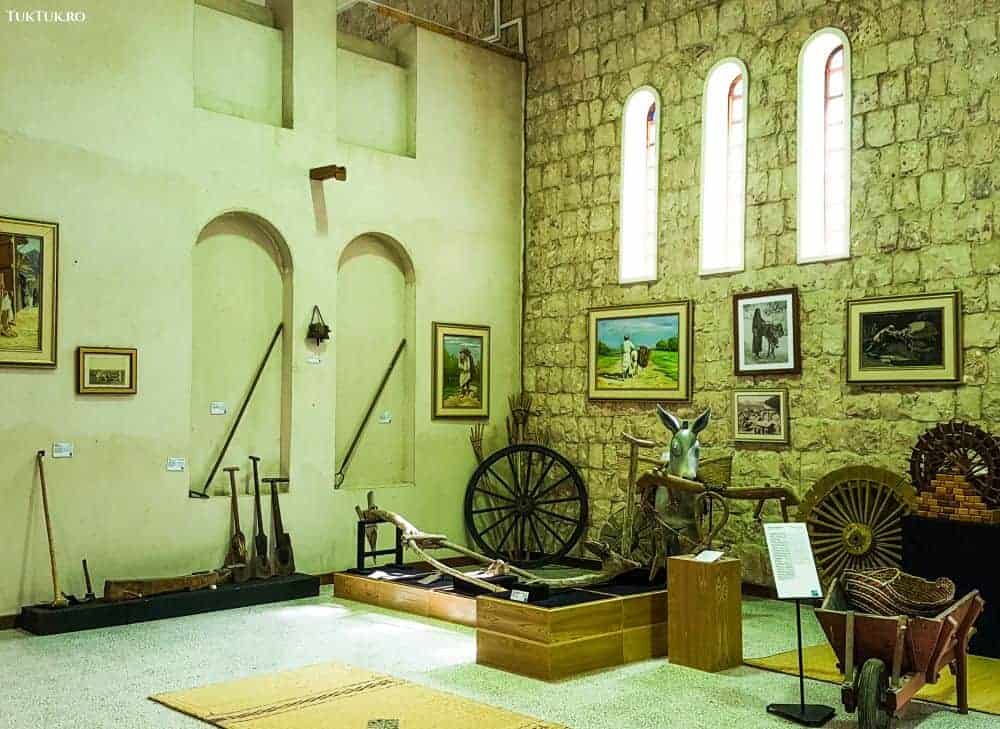
Doha has enough cultural landmarks to satisfy the tastes of any demanding soul. If you’re looking for museums, the first place you’ll head to is the Islamic Museum of Art, located on the Cornice of Doha, where the entrance is free, which has exceptional architecture and which houses, on five levels, art collections from three continents, from different periods of the last 1,400 years. We didn’t get to see this one, but we saw another one, which is also interesting in a certain sense.
It is said that the Museum of Sheik Faisal Bin Qassim Al Thani is unique in the cultural landscape of the Middle East, and after visiting it, you tend to admit with your heart that the statement may be true. The collections gathered in this particular museum are of sensation. Beyond the feeling that the objects exposed are grouped quite randomly, collecting items from the personal use of the sheik together with artifacts that you do not see elsewhere in the World, will quickly make you understand that you are not in the crazy universe of money man who had the mania of gathering various things at random but in that of a prominent businessman from the Middle East, who had the passion and dedication to collect art of an undeniable universal value.
Over 15,000 unique objects in the Sheik Faisal Museum are grouped on three major themes: Qatar’s legacy, Islamic art, and… vehicles. There is a special section for coins; there are rooms that reveal the traditional lifestyle of the Qatari people, there are rooms of fossils (including a dinosaur head), there are collections of vintage cars (we have seen fabulous Buicks, from the first half of the 20th century, Fort T models, Dodge models, Formula 1 cars from old times and many others), of boats and ships, collections resulting from the trips of Sheik Faisal, an airplane, skins of giant snakes, a corner dedicated to Christianity and many more. The museum opened in 1998, in fort Al Samriya, about an hour away from the capital Doha.
7 Let the adrenaline dominate you on safari on the desert dunes
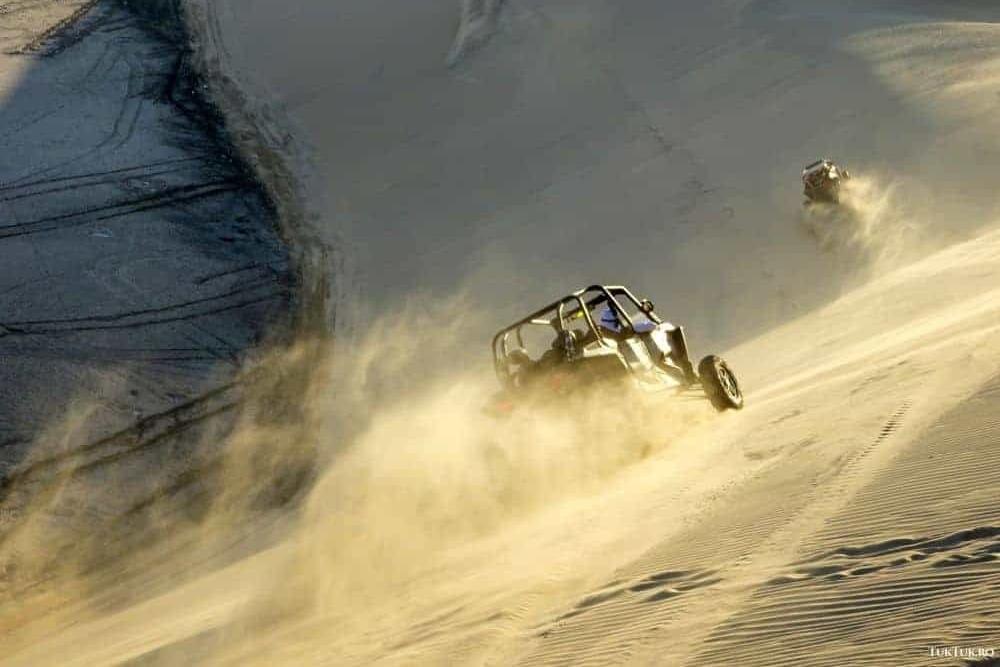
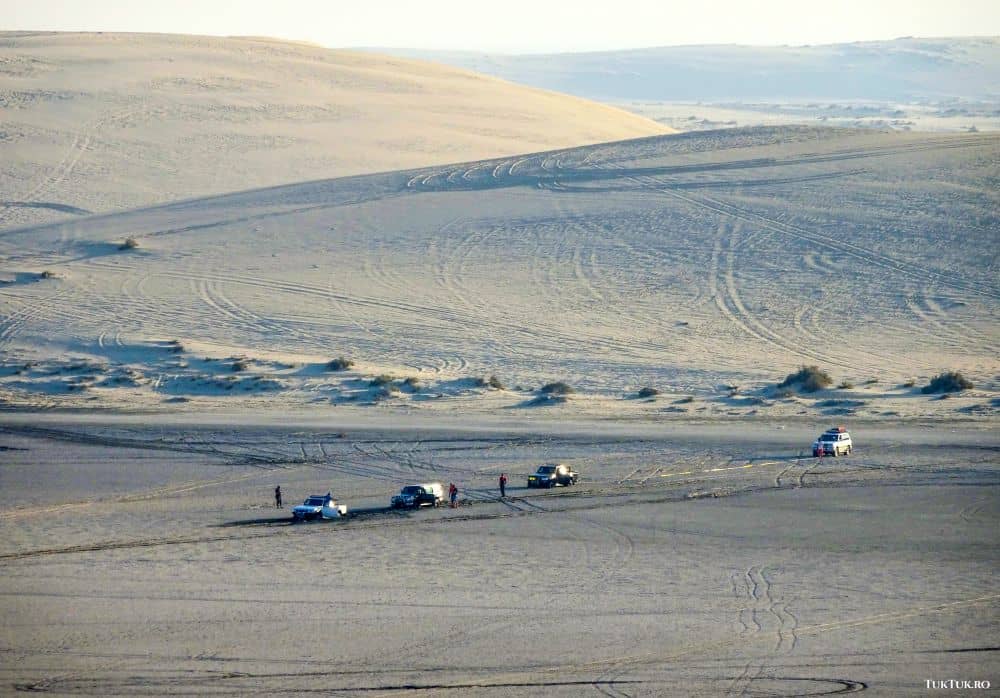
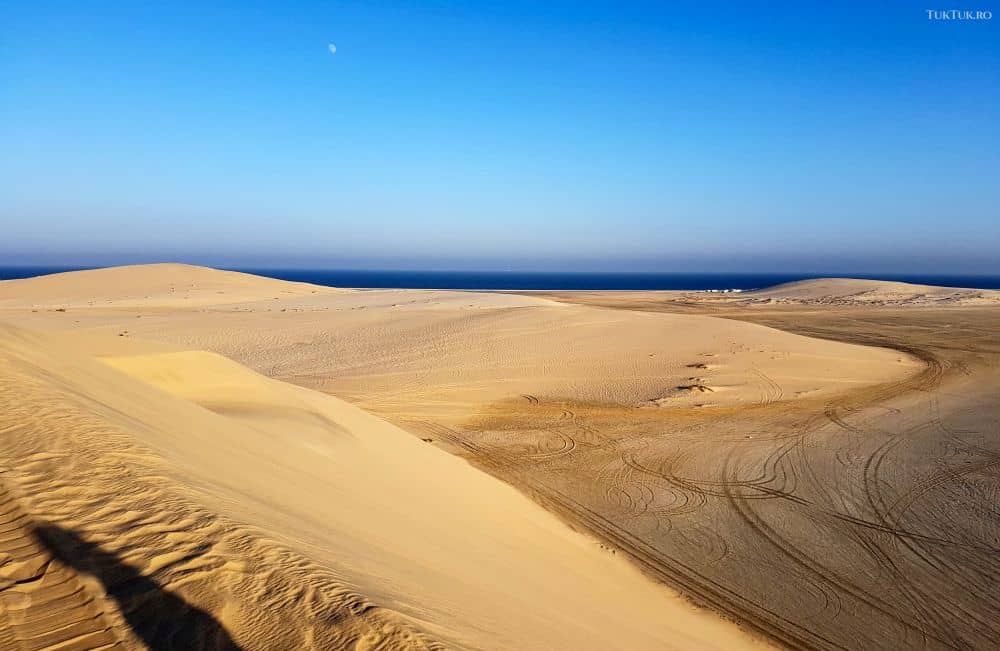
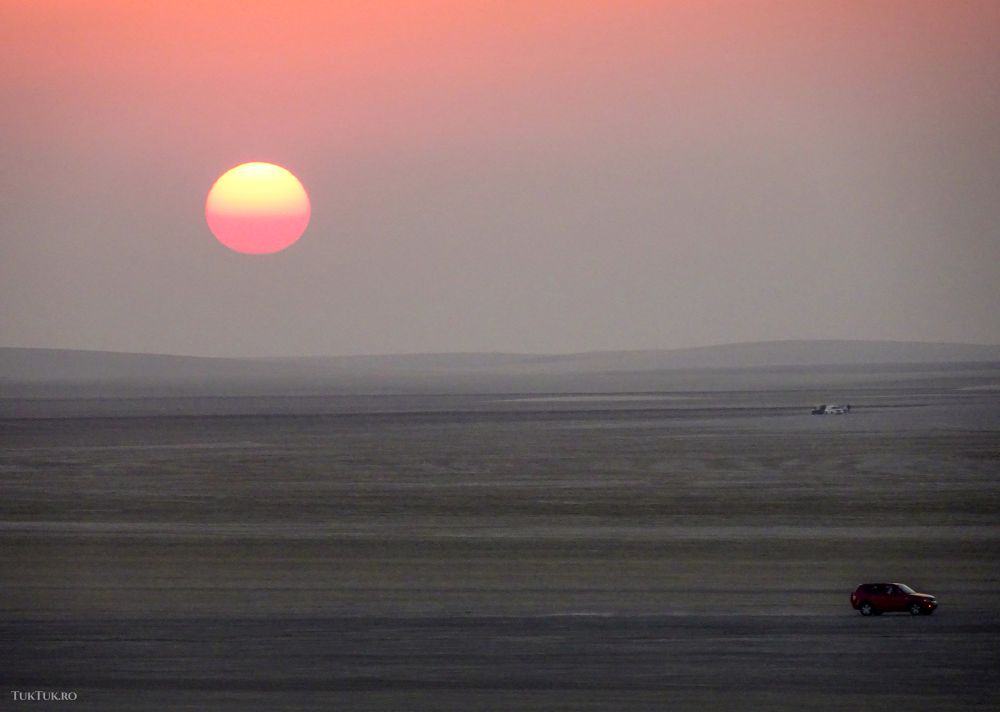
A visit to Qatar cannot be completed without going to the desert. After all, Qatar is a desert country, and the people here are treating the sand a little bit like we’re treating the snow, only they have it permanently. One of the ways they spend their free time is to take a jeep, go to the desert, and hit the dunes in an adrenalin way. That’s what I also did. A desert safari is like a picnic trip for the locals. They often take their tent and go among the dunes, find a good place, install and spend the night under the sky full of stars, make a barbecue, and listen to music. It may seem like a strange idea, but it’s as normal as it gets in Qatar.
Ala, the driver (phonetic transcription, probably called Allah), is 30 years old and self-declares mad. So crazy that a while ago, after throwing himself off some cliffs in South Africa, his heart stopped its work for a few minutes. The safaris he runs in the desert for tourists represent his second job, which he enjoys. He mowed his car and ran around the dunes. He promises to be slow, but when he climbs on a sand ridge and goes down fast, his wisdom turns into horror cries inside the car. But… no problem: Ala knows what’s he doing.
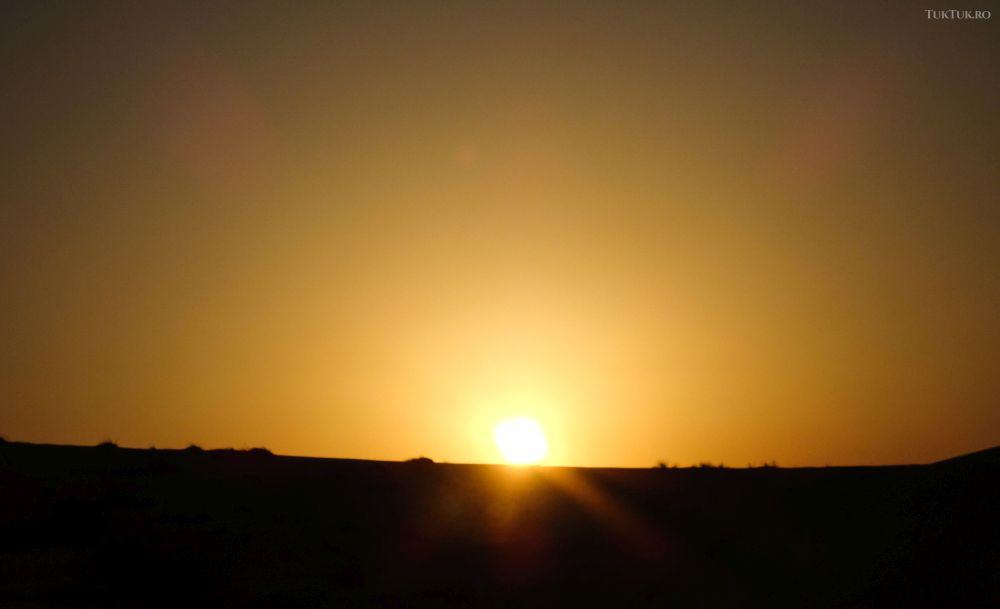
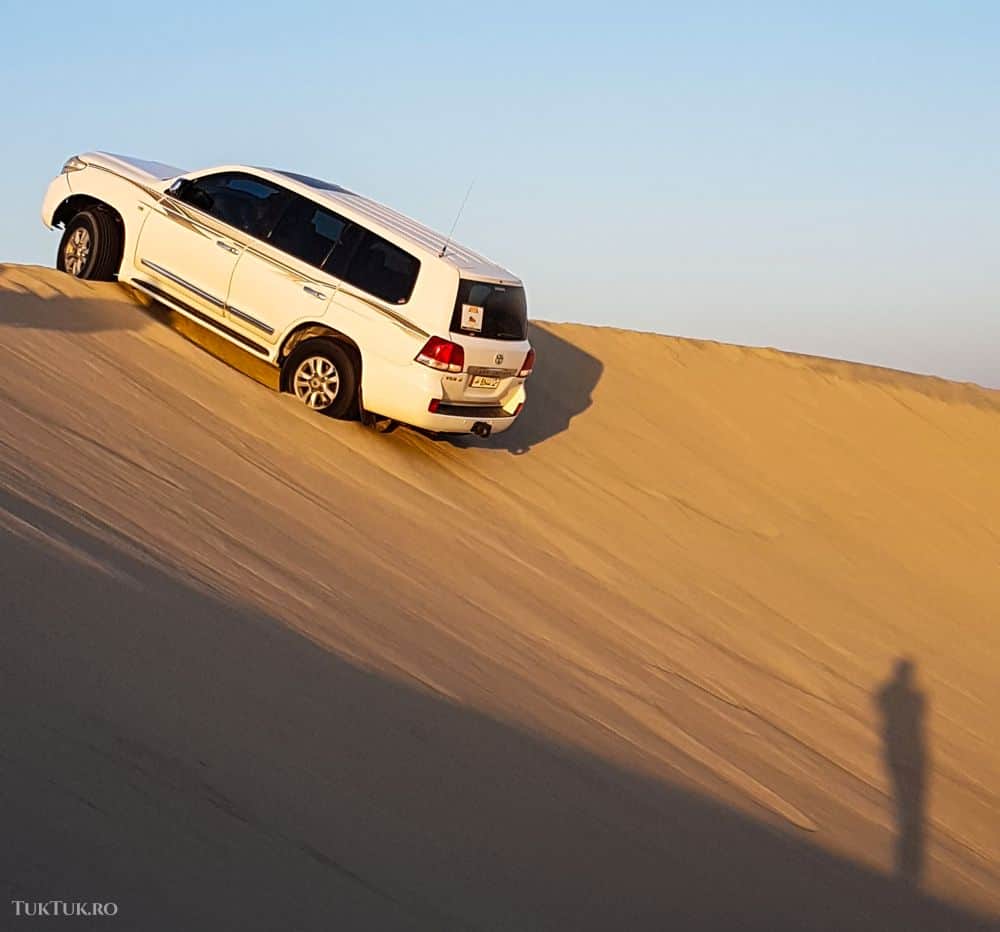
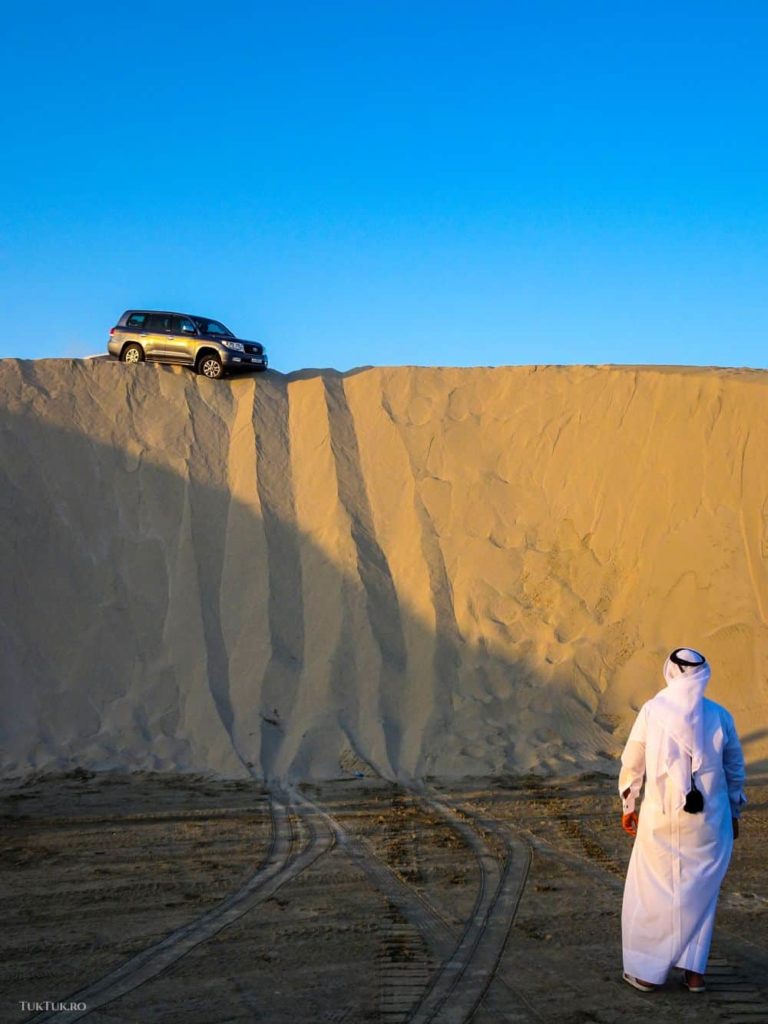
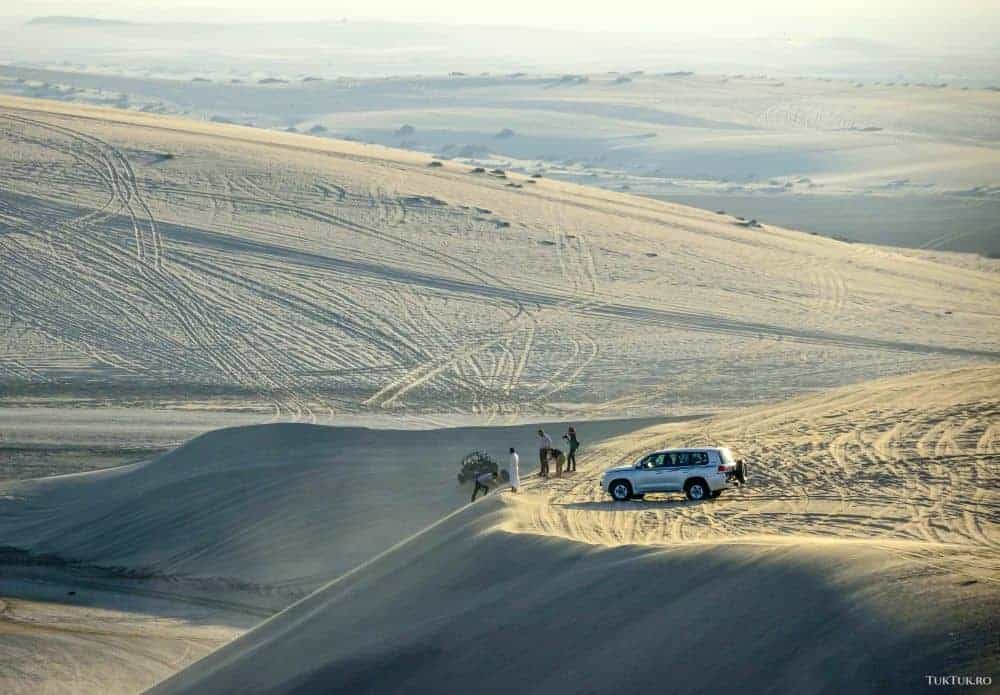
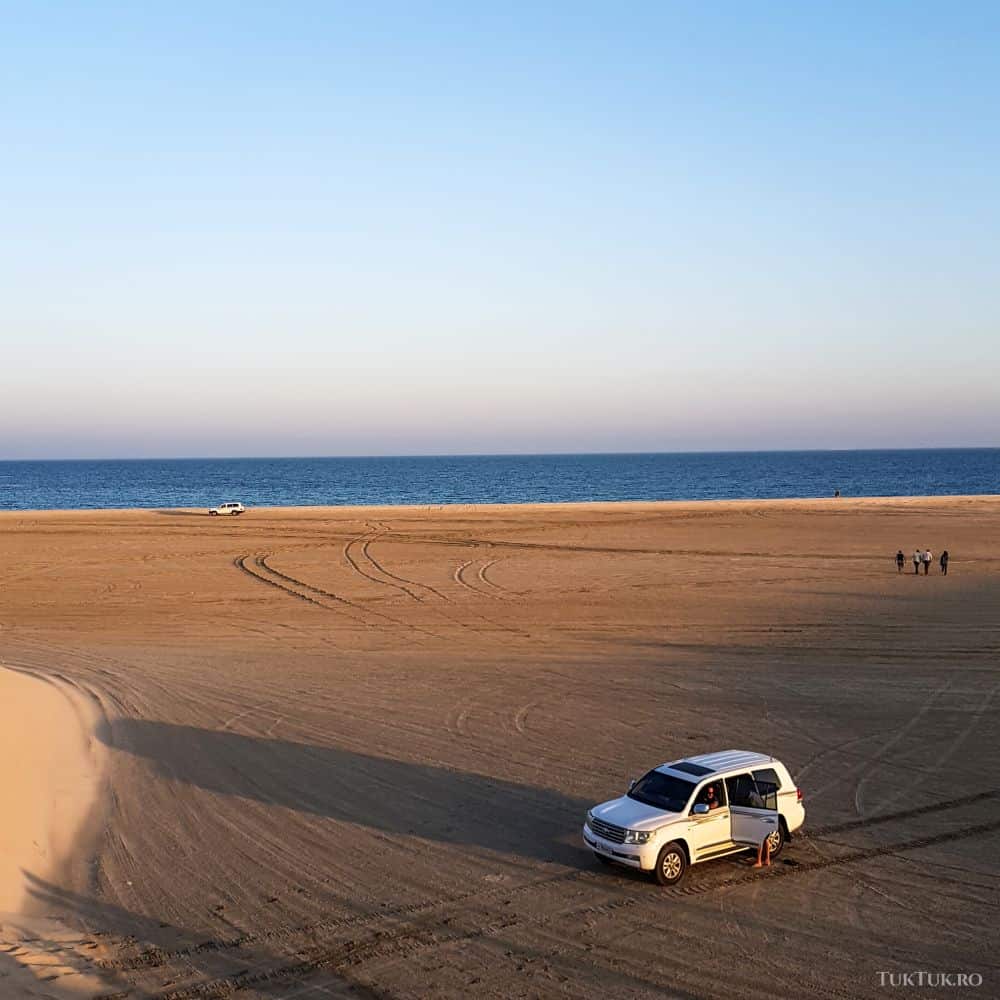
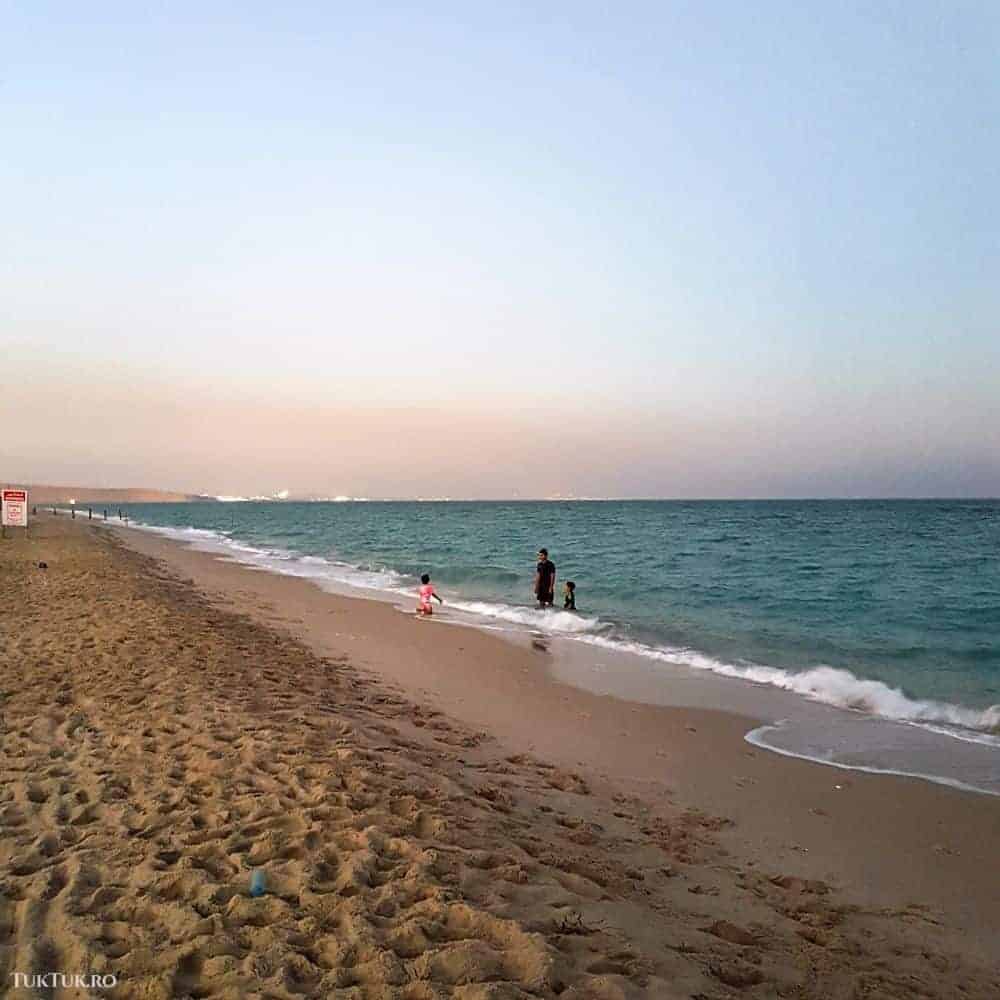
There are cars around us that are more tuned and more prepared for the madness of dune bashing. You feel like you’re in a real Mad Max movie, except you don’t have Charlize Theron sitting next to you, and the driver has both arms. The sun is slowly setting; the landscapes are fabulous, the car is racing more than 100 km/h to the Inland Sea, in the south of Qatar, on the border with Saudi Arabia, where, on the waterfront, it’s a sizzling barbecue waiting for the tourists, in an organized camp. The experience is brilliant. The moon lights the sea romantically, American music mixed on Arab rhythms flashes through the speakers, in the distance, you see the lights of the refinery and the desert, like a beautiful but shy girl, which does not seem willing to reveal her stories unless you have more time to spend with her. And time, unfortunately, is fast-forward.
You may like also: How to behave in Qatar, the pearl of the desert

